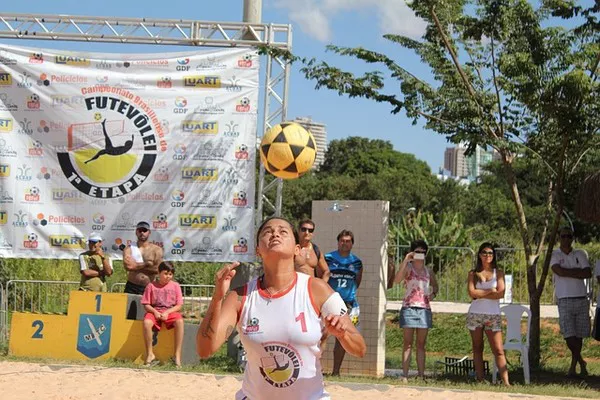Sand volleyball, often referred to as beach volleyball, has become a popular sport globally, celebrated for its competitive spirit and unique outdoor setting. One of the fundamental aspects of this sport is the size of the playing area, which is crucial for both recreational and professional play. Understanding the dimensions of a sand volleyball court is essential for players, coaches, and organizers. This article provides a comprehensive overview of the court’s size, its components, and the importance of its standardized measurements.
Official Court Dimensions
The standard dimensions for an official sand volleyball court, as specified by the Fédération Internationale de Volleyball (FIVB), are 16 meters in length and 8 meters in width. This measurement is applicable for both men’s and women’s play. The court is rectangular and divided into two equal halves by a net, making each side 8 meters long and 8 meters wide. These dimensions are critical for maintaining fairness and consistency in competitive play.
Boundary Lines
The court is marked with boundary lines that define the playing area. These lines are typically 5 centimeters wide and are included within the court dimensions. The boundary lines consist of the end lines and side lines. The end lines run parallel to the net, while the side lines run perpendicular. It is essential that these lines are clearly visible, often made from durable materials like rope or tape designed to withstand the rigors of outdoor play.
The Net and Its Specifications
The net plays a pivotal role in sand volleyball, acting as the division between the two halves of the court. According to FIVB regulations, the net height for men’s competition is 2.43 meters (7 feet 11 5/8 inches), and for women’s competition, it is 2.24 meters (7 feet 4 1/8 inches). The net itself is 8.5 meters long and 1 meter wide, with two antennae attached to the ends, extending 80 centimeters above the net to aid in judging faults during play.
Net Posts
The net is supported by two posts, which must be set 0.7 to 1 meter outside the side lines. These posts should be padded to ensure player safety, especially during intense rallies where players might collide with them. The stability and positioning of the net posts are crucial for maintaining the integrity of the net’s height and tension throughout the game.
Surrounding Free Zone
A critical aspect of a sand volleyball court is the surrounding free zone. This area extends at least 3 meters beyond the boundary lines on all sides and provides players with additional space to make plays outside the defined court dimensions. In high-level competitions, such as those sanctioned by the FIVB, the free zone can be extended up to 5 meters on the sides and 6 meters behind the end lines. This space is essential for ensuring player safety and allowing for the dynamic, fast-paced nature of the sport.
Sand Quality and Depth
The playing surface in sand volleyball is equally important as the court dimensions. The sand should be at least 40 centimeters deep and composed of fine, non-compacting grains to prevent injuries and allow players to dive and move freely. The quality of the sand can significantly affect the game’s playability and player performance. Ideally, the sand should be free of rocks, shells, and other debris that could cause harm to players.
Maintenance of the Sand
Regular maintenance of the sand is necessary to keep the court in optimal condition. This involves raking and leveling the sand to ensure an even playing surface. In competitive settings, the sand is often watered down before matches to reduce dust and provide a firmer surface for play.
Court Orientation
The orientation of a sand volleyball court is another important consideration, particularly in outdoor settings. Courts are typically aligned north to south to minimize the impact of the sun on players’ visibility. This orientation helps reduce glare and shadows, which can affect the outcome of matches and the safety of players.
Variations for Recreational Play
While the FIVB provides the standard dimensions for competitive play, recreational sand volleyball courts can vary slightly in size. These variations accommodate different space availabilities and player preferences. However, it is generally recommended to follow the standard dimensions as closely as possible to ensure a consistent playing experience.
Importance of Standardized Dimensions
Standardized court dimensions are vital for several reasons:
Fair Competition: Uniform court sizes ensure a level playing field, where skill and strategy, rather than court size, determine the outcome of matches.
Player Safety: Consistent dimensions help maintain a safe playing environment, minimizing the risk of collisions and injuries.
Training and Development: Standardized courts allow players to train and compete under the same conditions, fostering skill development and fair assessment of performance.
Global Consistency: For international competitions, standardized dimensions facilitate a common understanding and expectation among players, officials, and fans worldwide.
SEE ALSO Size 5 Volleyball: Standards, Specifications & Significance
Conclusion
The dimensions of a sand volleyball court are more than just measurements; they are the foundation of the sport’s integrity and fairness. From the exact size of the playing area to the quality of the sand and the orientation of the court, every detail is meticulously designed to enhance the playing experience. Whether for professional competitions or recreational games, adhering to these dimensions ensures that sand volleyball remains a dynamic, enjoyable, and safe sport for all participants. Understanding and implementing these standards is essential for anyone involved in the sport, from players and coaches to event organizers and facility managers.


